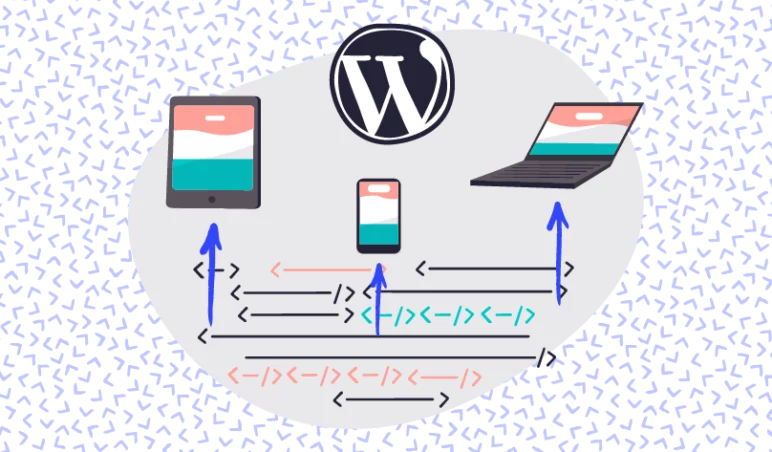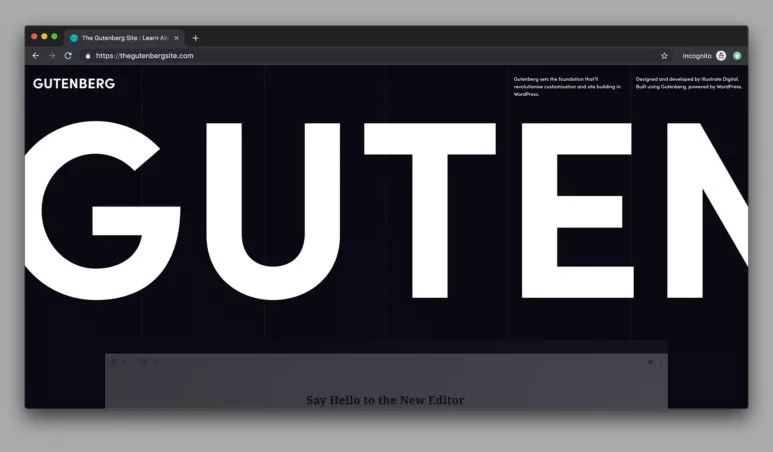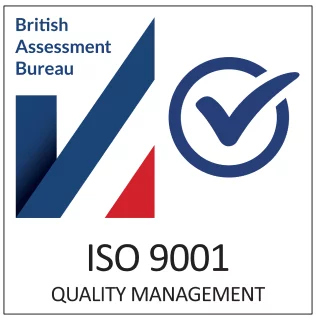In January, Google changed their search engine algorithms in a way that can negatively affect your website’s SEO if you use newsletter popups. This article summarises the changes, the reasons behind them, and what sort of email subscription popups will and won’t harm your SEO.
What change is Google making?
I’m referring to Google’s crack down on “intrusive interstitials”. This isn’t a very user-friendly term – put simply, it refers to popups that appear over the content when you’re trying to view a web page. Yeah, those really annoying ones.
Popups can be used for many different purposes, however the most common usage (by far) is for email subscription signup forms. You’ll have seen them in action while trying to read blog posts – you get a few seconds into an article (if you’re lucky) and a newsletter popup appears that you have to cancel (or sign up to) before you can continue reading.
At the moment, the change only applies to mobile search results. This means that if your responsive website has an email subscription popup, your SEO will only be affected for mobile users.
This is part of a wider drive to make all websites mobile-responsive. Google announced that they would de-rank sites that aren’t mobile friendly back in 2015.
If the mobile version of your site has a signup popup, you won’t immediately disappear from the mobile search results, as this is only one of many factors that Google use to determine where to rank your website. That being said, Google will prioritise websites that don’t have properly optimised popups and your SEO could very likely suffer as a result.
What’s wrong with email subscription popups?
If you have to ask this question then you have a very different mindset to me! I absolutely hate intrusive popups that cover the website I’m trying to read. If a popup distracts me then I will close it and refuse to subscribe on principle. I’ve also been known to immediately leave websites that have annoying popups!
At Illustrate, we’ll often advise against adding newsletter signup popups to our clients’ websites. Favouring better, less intrusive methods of building their mailing lists and everyone has been happy with our recommendations.
However not everyone is like us. Statistics show that email subscription popups can annoy people and increase your bounce rate, but they do dramatically increase the number of subscribers. This experiment is fairly representative of the studies on this topic. So you’ll annoy some people, but this is countered by the fact that you’re more likely to convert others.
I have also seen evidence that people who subscribe via a popup are less likely to be engaged with your communications (e.g. to make a purchase in future) than people who sign up via on-page signup forms. So it’s not really clear-cut whether newsletter popups will help or hinder your website.
Google has now forced a decision on the issue by penalising websites with intrusive popups. Personally, I think it’s great. By making this an SEO decision, website owners have a clear incentive to prioritise user experience over newsletter signups.
The change currently only affects the mobile search results because Google believes that the problem with popups is worse for mobile users due to the small screen size. Have you ever felt frustrated at having to tap a tiny cross in the corner of a popup on your mobile? I know I have.
However, email subscription popups damage user experience on all screen sizes by distracting visitors and demanding attention. For this reason, I expect that Google will roll out this change to desktop search in the future as well.
What type of newsletter popups will harm my SEO?
Google has provided helpful examples of the types of popup that could get your website penalised under the new rules for mobile search:
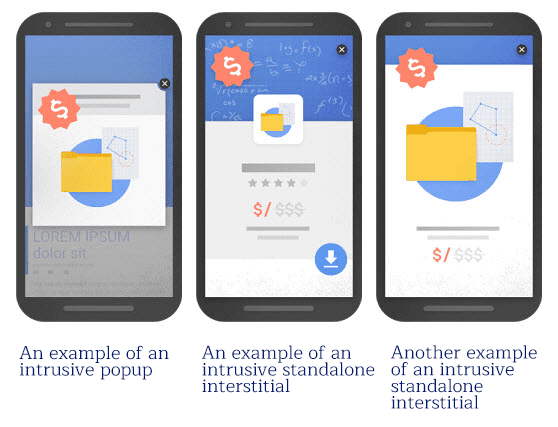
As you can see, all these popups cover significant portions of the mobile screen. They literally prevent you from continuing what you were doing until you either sign up or cancel the popup.
These are the most annoying types of email subscription popup and Google is quite right to focus on these.
Does the penalty only apply to popups that appear when the page first loads?
Surprisingly, no. When I first heard about the change, I assumed that Google would only penalise sites with popups that appear before you can see the page content. This would fit with how search engines usually crawl pages, as they read all the HTML for the page as soon as it loads.
Google has confirmed that the SEO penalty also applies to popups that appear while the user is reading through the page. This is common practice for newsletter popups – they often appear after 30 seconds or so, or when you hover over the button to close the tab.
However, the change doesn’t apply to popups on subsequent pages that you visit. So if you click from the mobile search results to a specific web page then any intrusive popups on that page will count. But if you then click to another page, any popups on the subsequent page don’t count. If you really need popups on your website, it would be worth removing them from your main landing pages and continuing to use them elsewhere on your site (e.g. after a ‘Read More’ link on a page that people rarely access directly).
Are ANY types of popup ok?
Yes. Your SEO won’t be affected by the following types of popup:
- Popups that meet a legal obligation, e.g. cookie acceptance or age verification.
- Popup login forms that give the user access to hidden content which can’t be crawled by search engines.
- Banners that use a reasonable amount of space and are easy to cancel.
Here are some examples:
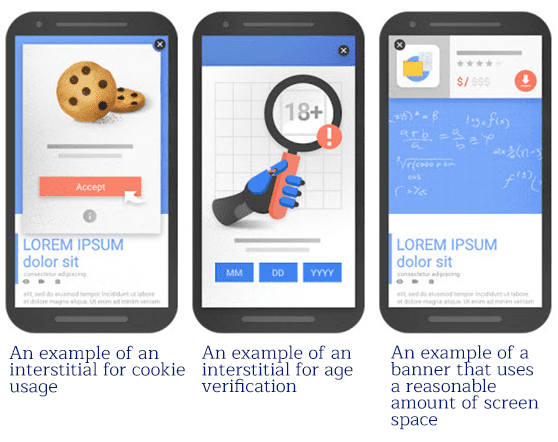
Can I still have a newsletter popup form?
If you really want a popup newsletter signup form on your website, read the guidance carefully and plan the best way to achieve this without harming your SEO (or user experience).
Here are some tips:
- If you really must have a newsletter popup, keep it as small as possible. Use the third example above as a guide on the maximum proportion of the screen it should cover on mobiles.
- Test the cancel button (or X icon in the corner) on a smartphone. Can people with large fingers easily dismiss the popup?
- Try on-page newsletter signup forms. Add a signup form to your sidebar or embed it part-way through the page, with some text highlighting the benefits of signing up. Monitor your subscription rates and see if it really makes a difference.
- Try adding a notice to the top or bottom of the page. There are ways to capture your visitors’ attention without using popups. I prefer websites that add a noticeable but less intrusive banner to the the page, above or below the page content. This captures people’s attention without annoying them by hiding the content they’re trying to see.


